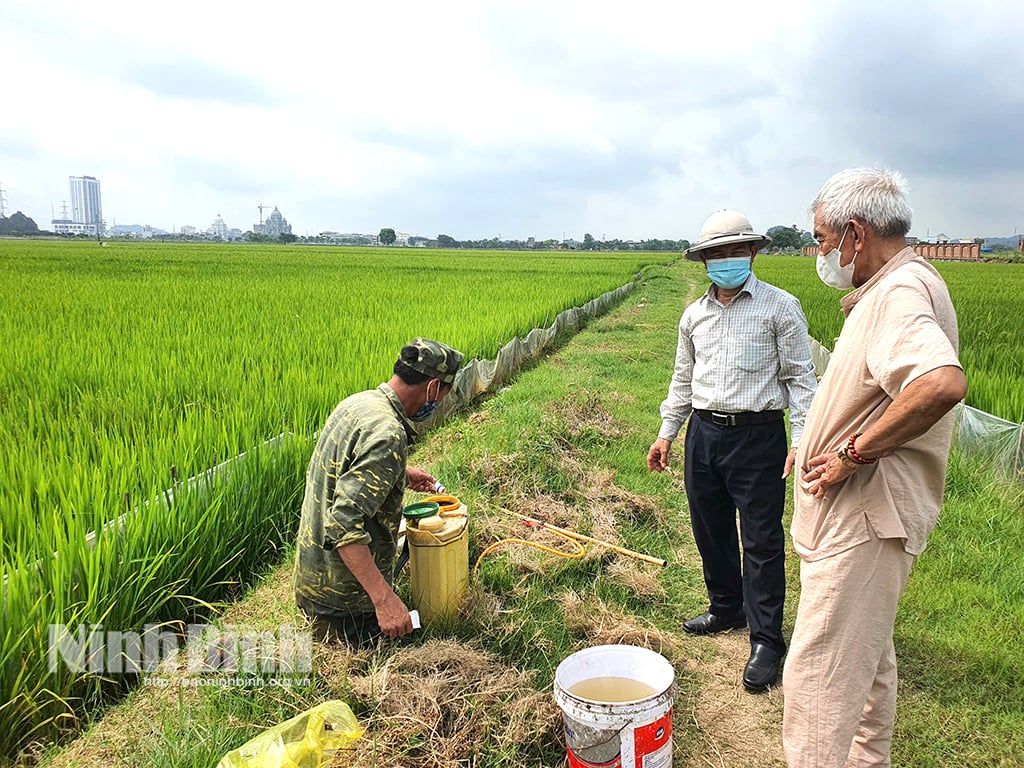
Rice blast, planthoppers, leaf rollers "lurking"
This winter-spring crop, the province has planted more than 39,000 hectares of rice. Although the rice is growing well, through monitoring, many dangerous pests and diseases are at risk of breaking out and causing widespread damage, especially on the late spring rice crop at the heading and flowering stages.
Information from the Ninh Binh Province Department of Crop Production and Plant Protection shows that the emerging pests in this crop are neck blast and panicle blast. The disease has appeared and caused local damage to early spring rice, with a total infected area in the province reaching 7.2 hectares, of which 1 hectare is severely infected and 0.2 hectares have a serious yield reduction of up to 70% in Nho Quan district. What is worrying is that the infected area this year is higher than the same period last year, and it is predicted that if the wet weather continues, the disease will spread to late spring rice.
In addition, the second generation of brown planthoppers and white-backed planthoppers are causing damage at high density, commonly 400-500 individuals/m², even exceeding 3,000 individuals/m² in some places in Kim Son, Yen Mo, Yen Khanh districts... The third generation of white-backed planthoppers is expected to bloom in the coming days, directly threatening rice yield from the flowering to ripening stage and potentially spreading black-striped dwarf disease.
The second generation of small leaf rollers also caused widespread damage with a common density of 20-30 individuals/m², in some places over 100 individuals/m². The third generation of adults is blooming, and the third generation of larvae is expected to continue to cause damage to the green, ripe late spring rice that has ripened after May 20, threatening to turn the flag leaves white, greatly affecting yield. In addition, brown spot, bacterial streak, bacterial leaf blight, and weedy rice continue to cause damage to rice fields, and the two-spotted stem borer is causing scattered damage.
The above figures show that the situation of pests and diseases on winter-spring rice is complicated and is at risk of affecting productivity if there are no timely and effective control measures.
Promote the application of technological advances in spraying and pest control.
In Kim Son district, one of the province's important rice granaries with over 7,700 hectares of 2024-2025 Winter-Spring rice crop in the stage of ripening, flowering, and drying, the locality is also focusing on directing and guiding farmers to closely monitor and proactively prevent pests and diseases.
A representative of the Agricultural Service Center of Kim Son district said that although the rice is growing well thanks to ensuring water and timely care, through investigation, some pests are emerging and have the potential to cause widespread damage to many rice areas, especially rice fields that have ripened after May 20, 2024. Of which, the most notable is that leaf blast disease has emerged and caused widespread damage to the entire area, especially severe damage to lush green fields with excess nitrogen fertilization, with a disease rate of 30-40% in some places, and in some cases over 70% of leaves in many cooperatives such as Thuong Kiem, Bac Thanh, Bac Loc, Hop Thanh...
The Center believes that with the alternating sunny and rainy weather conditions, high humidity and the available source of leaf blast disease, the risk of neck blast disease and panicle blast disease appearing and causing widespread damage is very high if there are no timely preventive measures. Therefore, the Center has requested the People's Committees of communes and agricultural cooperatives to mobilize farmers to increase field inspections, closely monitor the development of pests to have timely preventive measures, especially focusing on spraying on the entire area infected with leaf blast disease.
Mr. Le Van Thang, Deputy Director of Thuong Kiem Agricultural Cooperative, Thuong Kiem Commune, Kim Son District, shared: “Although the rainy weather in recent days has been favorable for rice to ripen, it has created favorable conditions for rice blast and rice neck blast to develop. Through inspection, we have seen a strong risk of damage from the disease in the coming time. Therefore, the Cooperative is widely announcing and mobilizing people to focus on spraying from May 18 to 24 on 100% of the rice area. We also coordinate with drone owners to provide spraying services, helping people save costs and ensure high prevention efficiency."
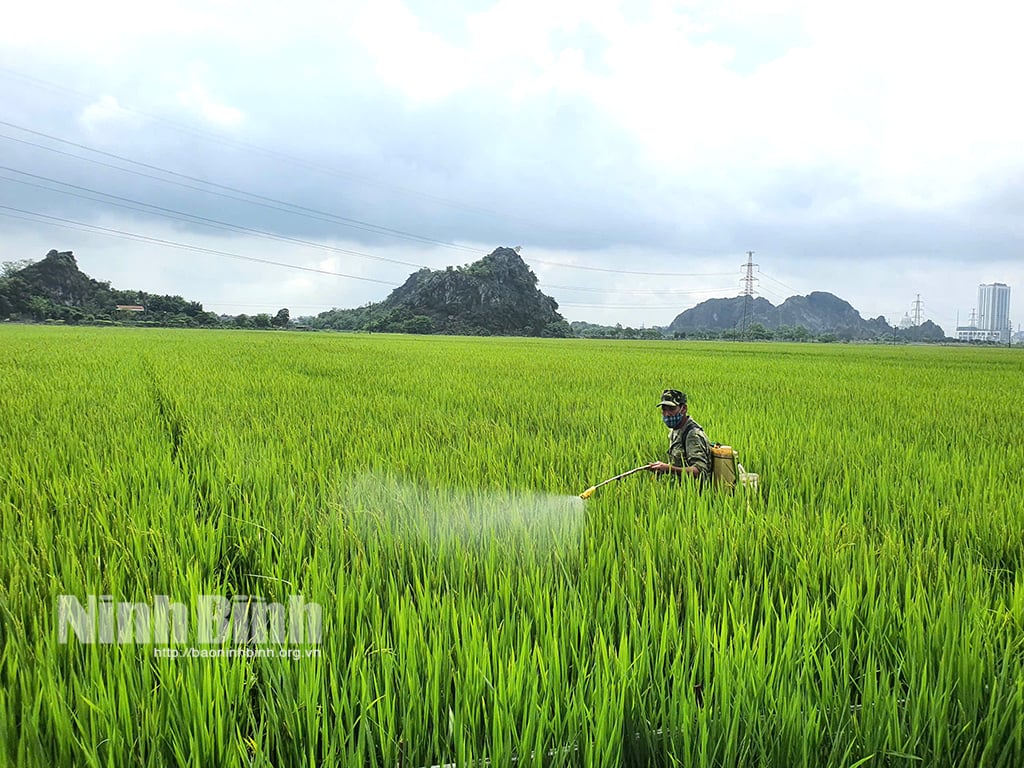
Faced with the complicated situation of pests and diseases, the provincial Department of Crop Production and Plant Protection recommends that farmers across the province: Urgently harvest the ripe early spring rice. Increase field inspections, closely monitor the development of pests and diseases and weather to take timely preventive measures, and not spray pesticides indiscriminately to protect natural enemies and the environment.
Specifically: For neck blast disease, spray according to the rice flowering rate in fields that have been infected with leaf blast disease, susceptible varieties, and green fields near the disease source when the rice is 3-5% flowering. Fields that have been severely infected with leaf blast disease need to be sprayed twice, the second time 5-7 days after the first time.
For brown planthoppers and white-backed planthoppers, the spraying time is from May 20 to 25. At the panicle-holding stage, spray on fields with a density of 2,000 insects/m2 or more when the second instar planthoppers are in full bloom, using systemic insecticides. At the green to red-tailed stage, spray on fields with a density of 1,000 insects/m2 or more when the second instar planthoppers are in full bloom, using contact insecticides. For small leaf rollers: spray on fields with a density of 20 insects/m2 or more when the second instar larvae are in full bloom in Kim Son and Yen Khanh districts. The spraying time is from May 18 to 23. In addition, combine spraying to control two-spotted stem borers, brown spot disease, and grain smut; treat weedy rice by uprooting.
The professional agency also encourages cooperatives and farmers to widely use the service of spraying pesticides using drones to increase the effectiveness of prevention and control. Compared with the method of spraying manually with a backpack sprayer, spraying pesticides using Drones is 30 times faster, reducing costs by about 50%, while still ensuring the same or even higher effectiveness of prevention and control.
Source: https://baoninhbinh.org.vn/tang-cuong-kiem-tra-phong-tru-sau-benh-cuoi-vu-579156.htm


![[INFOGRAPHIC] LG xboom AI: The coolest Gen Z portable speaker this summer](https://vphoto.vietnam.vn/thumb/1200x675/vietnam/resource/IMAGE/2025/7/29/db13af6569c24d0582b8a1c82e7cecd2)
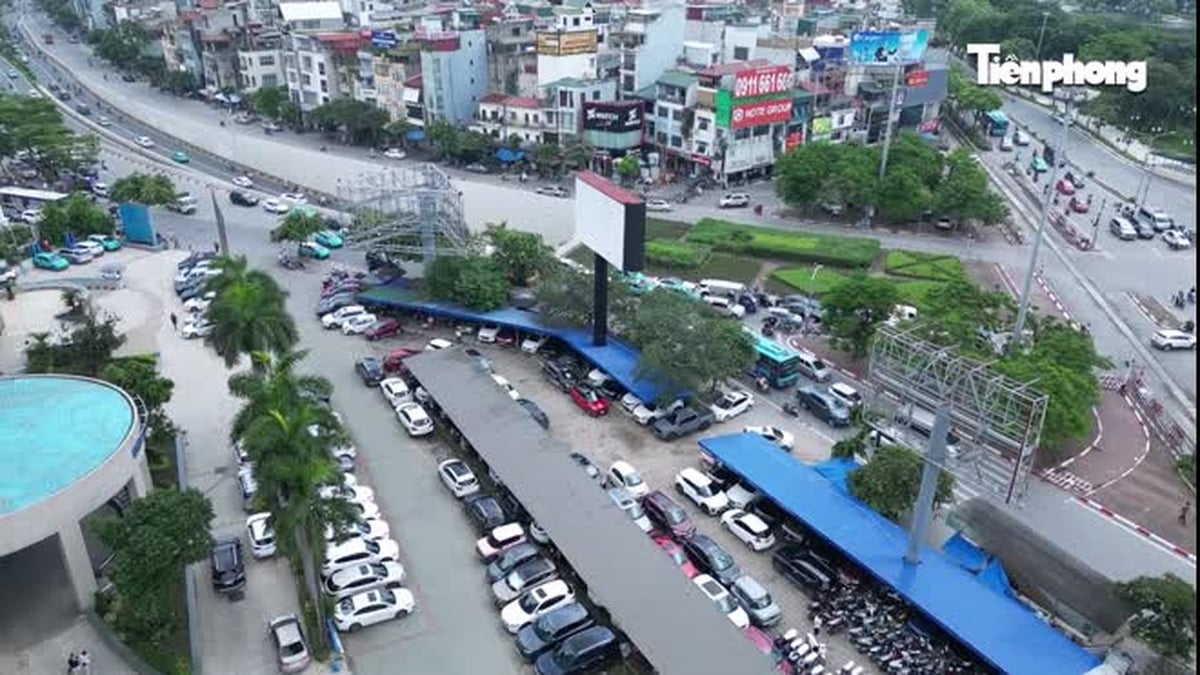


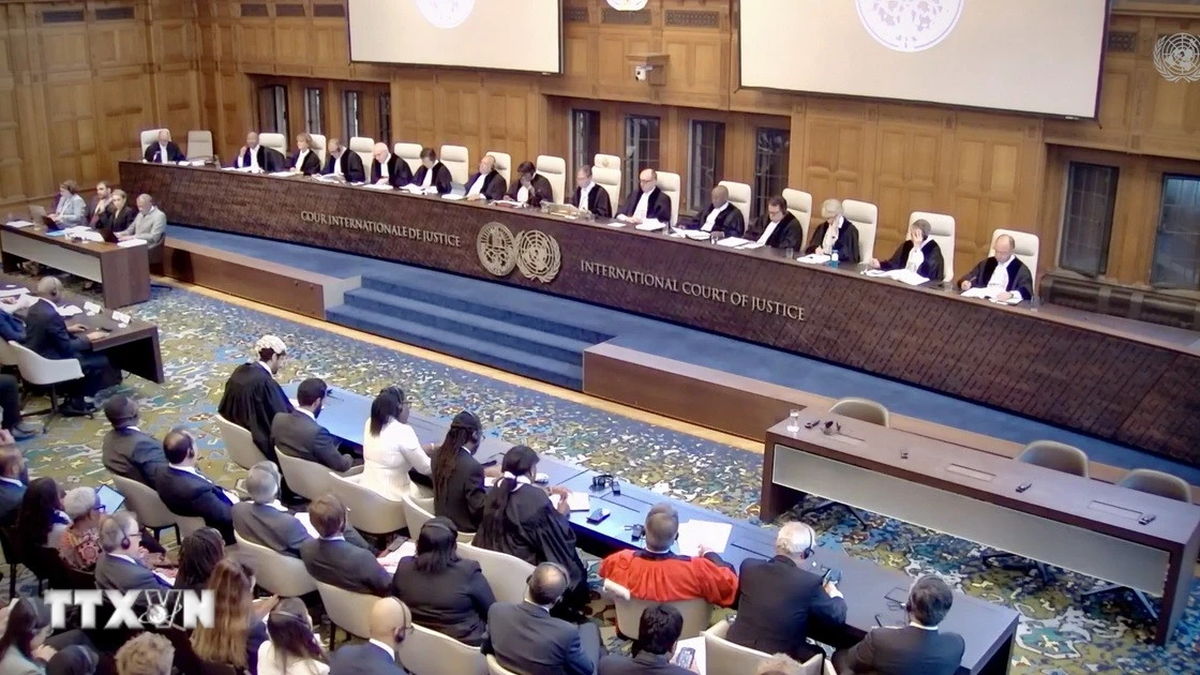

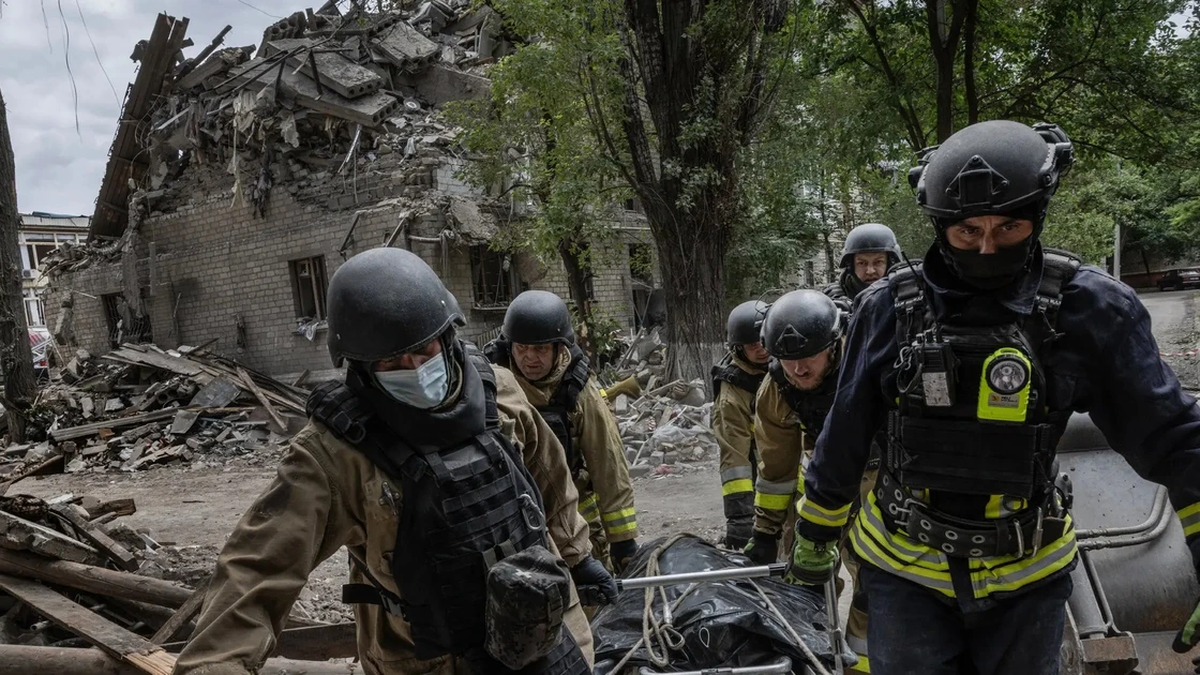

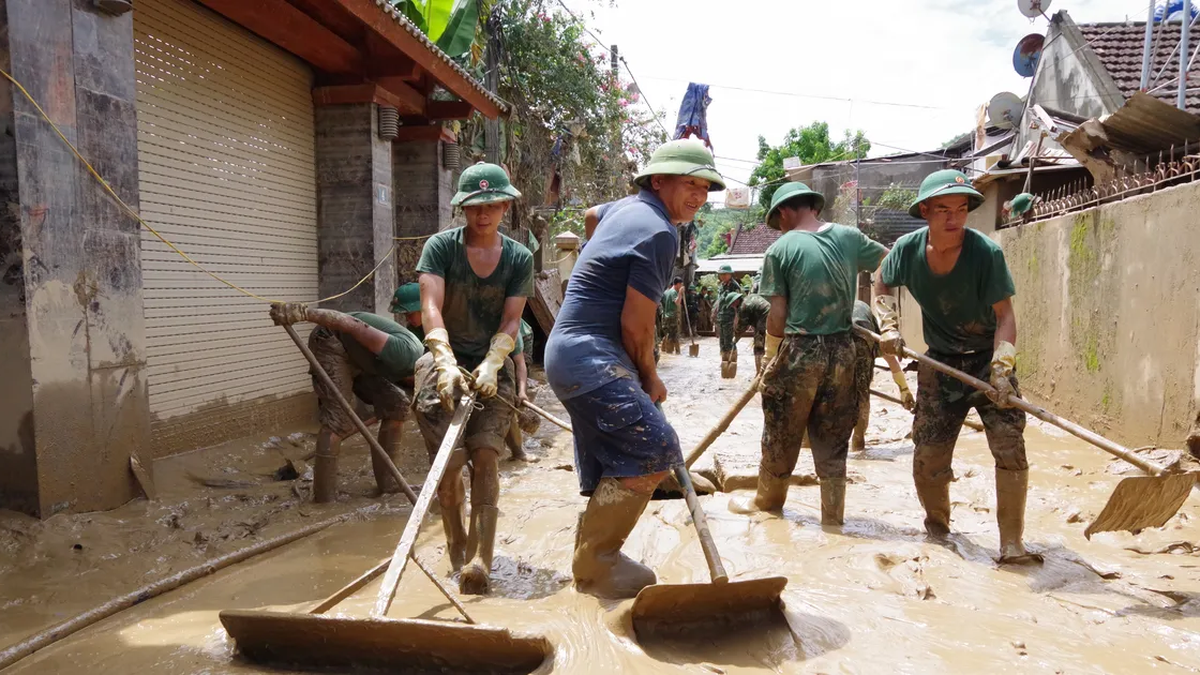













![[Photo] National Assembly Chairman attends the seminar "Building and operating an international financial center and recommendations for Vietnam"](https://vphoto.vietnam.vn/thumb/1200x675/vietnam/resource/IMAGE/2025/7/28/76393436936e457db31ec84433289f72)










































































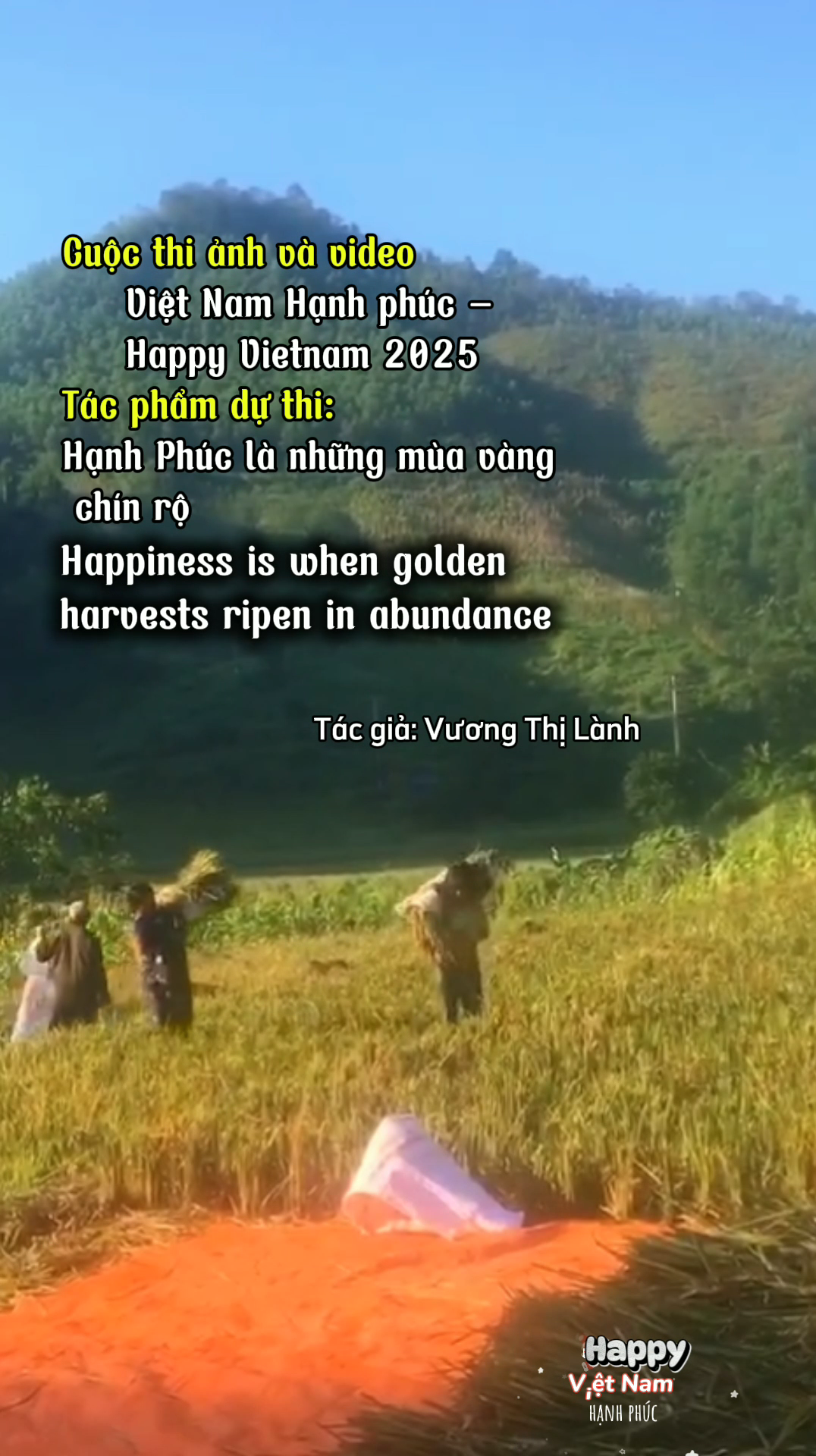

Comment (0)